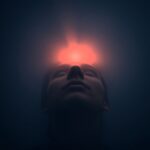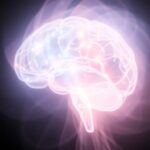Ramping Up The Practice
As I prepare for the beginning of the group meditation course in February, I have been reading the 3 books with the theory and the practice from the teacher. I already started practicing the first base energetic practice called kinhin as well as the 2 Buddhist meditations of Cattaro Satipatthana and Brahmavihara.
I have started seeing the difference in the quality of meditation after 1.5 hour practice of kinhin followed by an hour of Cattaro Satipatthana. At the end I am able to achieve a pretty stable consciousness with first inklings of upcoming pīti. I will need to extend the meditation part to 2 hours next to delve deeper into the meditative state as it seems currently the first hour just goes towards establishing that baseline state.
Improved Understanding of Meditation
Overall, my understanding of what meditation is has significantly expanded since I have started studying and practicing Dharma based on the videos and books of the current teacher. Meditation is defined as a repeated mental action to form a higher state of consciousness and return it to its original state. It is not merely a random set of psychological exercises or a series of disjointed emotional experiences but rather a precise sequence of practices, each yielding specific spiritual or mystical experiences that logically follow the Law of Conditioned Arising. The necessity for spiritual practice stems from the fact that only genuine experience through practice can enable us to comprehend the world of true reality.
The aim of meditation is to realize our true essence and original state, a state of Calmness and Contemplation, and a state of genuine freedom and happiness. To achieve this, one must stop the movements of the physical body and consciousness, sit in a stable posture, cease the workings of consciousness, concentrate on the inner world, and strive to understand its essence – the interplay of the three consciousnesses, the Five Aggregates, and the three worlds.
First Stumbling Blocks
The following are some of my investigations into the role of the brain as part of the Cattaro Satipatthana meditation.
When contemplating the body in Cattaro Satipatthana practice, I am not able to ascertain that I am not the brain in my body. As far as my experience goes, my awareness and anything I’ve ever been able to experience only existed as long as my brain existed. My consciousness and self could simply be a construct and an output of the brain without which none of me would exist. So in what way am I not my brain?
Some responses I got on Reddit:
One way you could look at it is that the brain is a receiver, like a radio.
The radio isn’t the music, even if we can measure signals inside the radio that exactly correspond to the frequencies and amplitudes making up the sound. The music is being playing somewhere else, in a concert hall, for example.
The brain as receiver and perhaps transmitter is picking up signals from some more subtle layer of reality, or interfacing between physicality and that subtle layer by processing sense data and outputing motoric instructions to the body.
This is just an image for the sake of trying to picture a possible way things could be. I believe we only can verify it by practicing in line with the four foundations of mindfulness. And as you’ve been discussing, we are taught that verification should come about through direct experience, rather than by reasoning.
My response:
I am familiar with that interpretation. I remember encountering something similar in the book called The Holographic Universe. This theory sounds as good as any other, however, how do we verify ANY theory with our direct experience? I guess this is the whole crux of the meditation but I am somehow really tripping up on the role of the brain in the whole enterprise of my potential identity.
I am trying to experientially prove this statement: I am not my brain. If the brain controls my thoughts and my mouth that says this, how am I not my brain? Without the brain these thoughts wouldn’t be. Ok the brain may be the receiver of my true essence (consciousness or whatever is the underlying nature of this experiencing) but that doesn’t help with my direct investigation. How would I verify that hypothesis?
Another comment:
Ah. You’re not your brain, any more than the browser I’m typing this into is the hardware it’s running on.
Please note that the following is not traditional Buddhism, and I am not a teacher; this is just contemplations which have worked for me, for the purpose of disidentification from my brain:
One approach is see yourself as a computational artifact of neural activity. Your brain is going to fail you (the computational artifact) and misrepresent you and your intentions fairly quickly. There’s a bunch of sci-fi out there based on the implicit assumption of self as a computational artifact. It’s a major theme of Greg Egan’s early writing. His “Learning to Be Me” is a good example.
Maybe life will be better when we can run the computational artifacts we identify as ourselves on sturdier and more reliable hardware, but that’s probably not going to happen in the foreseeable future. So don’t think of yourself as the brain. It’s going to let you down.
Me-as-a-computational artifact is a self concept you’ll also have to set aside at some point, but it’s a slightly more refined one than identification with the brain.
Another approach is to consider that people lose half their brain to injury sometimes, and sometimes they even stay fairly functional. Now imagine half your brain is somehow transplanted into the skull of a clone of you. Now there’s two beings you could identify with. There’s no rational basis for choosing between the two.
My response to that was(deleted by the automoderator there I guess for quoting AI):
How would I verify this on my own experience? I have no way of recognizing whether my brain is altering the real me’s inputs/outputs as there is the single stream of consciousness I have access to. Unlike the Egan’s story, I can’t detect any discrepancies between the jewel and the body’s actions, so to say(pretty cool short story by the way).
The examples with the brain injury and splitting are interesting but we have no way of knowing how either feels empirically and whether the resulting selves are identical to the non-injured and non-split states.
This is tripping me up harder than I expected. The brain creates a unified experience from sensory inputs, memories, and neural processes. In that way, it may be the source of the illusory self. But what I’m trying to get to is if it is the source of the awareness behind the sense of self as well.
The very tool you would use to investigate is potentially the thing being investigated, creating a kind of closed loop. I guess that’s how you arrive at the hard problem of consciousness lol.
After chatting with AI a bit, I got some interesting points.
“The experiential insight in these practices is not about proving or disproving the brain’s role but about recognizing the nature of awareness as non-identifiable with any one thing, even if it’s dependent on the brain for now.”
“Bring your attention to the awareness that is observing all of this. Not the thoughts, not the sensations, but the knowing quality that is aware of them.”
So it essentially suggests to escape the loop by forgetting about the brain altogether and concentrate on meditation on awareness itself since regardless of the role of the brain direct investigation of awareness still is the valid form of personal investigation on the topic. In other words, gotta meditate more :D”
Aid From AI
The chat with AI was actually helpful on this topic and I explored multiple perspectives.
From the perspective of Satipatthana practice:
- Awareness as an observer: In the Satipatthana Sutta, the contemplation of the body (and other foundations of mindfulness) aims to deconstruct the illusion of a fixed “self.” When observing the body, feelings, mind, or phenomena, the practice is not about intellectually concluding “I am” or “I am not” the brain but rather directly experiencing impermanence and interdependence.
- If you observe the sensations in your head or even the workings of the mind, notice how they arise and pass away. The brain’s processes (thoughts, emotions, memories) are also fleeting. This impermanence challenges the idea that the brain is a “fixed self.”
- The awareness that observes the brain’s activities is not identified as those activities. It is simply present.
- The “construct of self”: In Buddhist philosophy, the “self” is considered a construct arising from conditions (causes and effects). Your brain processes information and gives rise to a coherent sense of identity, but this “self” is not inherently real. It is a useful narrative for survival and functioning but lacks an independent essence.
In contemplating the brain, the question shifts: If “you” are your brain, who is observing the brain’s constructs? Is there an unchanging “you” behind that experience?
From a neuroscientific perspective:
This insight aligns with findings in neuroscience: consciousness and selfhood appear to be emergent properties of the brain. The brain creates a unified experience from sensory inputs, memories, and neural processes.
But even in this view:
- The “self” is not reducible to any single part of the brain but is a dynamic and distributed process.
- This opens the possibility of asking: Is the self just a byproduct, or is there something beyond the brain generating this awareness?
So in conclusion:
- Even if awareness is generated, it has qualities (formlessness, knowingness) that are unique and mysterious.
- From the perspective of Satipatthana practice, the “what” or “where” of awareness is less important than directly observing it. By investigating your moment-to-moment experience, you may arrive at insights that transcend this intellectual impasse.
Next Steps
I will aim to meditate on awareness itself more as part of my next practices to see what insights it yields. Will consider these questions as part of the inquiry process:
- Am I creating these thoughts? Or am I simply aware of them as they arise?
- What is aware of these experiences?
- Where is this awareness located? Is it in my head? My brain? Or is it not confined at all?
- Does this awareness have a shape, form, or boundary?
- Does this awareness feel dependent on effort?
- Does it seem limited by the body or brain, or is it just present, here and now?



